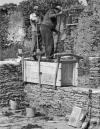Abstract
Portuguese traditional architecture is at a stage that one couldconsider as expectant, in the measure that, if on the one hand thereis a recognition of its architectonical qualities linked to traditionand to landscape integration, on the other hand its adaptability tocontemporary times has been inefficient. The general populationdoesn’t give it much credit, and doesn’t hesitate to replace this heritageby a new reality, with no feelings of loss. The probable causeof the permanency of so much of this heritage, both individual andin rural groups, is based on two main factors, emigration to newcities and other countries, and economical difficulties in the oneswho stay. Nevertheless, a new hope seems to be emerging after30 years of persistent work of a very few whose dedication to traditionalarchitecture has been marked by local research, throughcareful register of archaeological, anthropological, architecturalevidence, amongst other disciplines and, lately, through the carefulinvestigation of materials and technologies with the resources ofuniversities and their laboratories. In parallel, reference editionshave emerged. Besides the excellent interventions in conservation,restoration, and rehabilitation of buildings of traditional technologyand expression, other examples of contemporary architecturethat uses traditional materials and technology, a lot of them (re)establishing equilibriums in the field of physical integration, bothin rural and urban areas.Apuntes is registered under a Creative Commons Attribution 4.0 International Public License. Thus, this work may be reproduced, distributed, and publicly shared in digital format, as long as the names of the authors and Pontificia Universidad Javeriana are acknowledged. Others are allowed to quote, adapt, transform, auto-archive, republish, and create based on this material, for any purpose (even commercial ones), provided the authorship is duly acknowledged, a link to the original work is provided, and it is specified if changes have been made. Pontificia Universidad Javeriana does not hold the rights of published works and the authors are solely responsible for the contents of their works; they keep the moral, intellectual, privacy, and publicity rights.
Approving the intervention of the work (review, copy-editing, translation, layout) and the following outreach, are granted through an use license and not through an assignment of rights. This means the journal and Pontificia Universidad Javeriana cannot be held responsible for any ethical malpractice by the authors. As a consequence of the protection granted by the use license, the journal is not required to publish recantations or modify information already published, unless the errata stems from the editorial management process. Publishing contents in this journal does not generate royalties for contributors.


